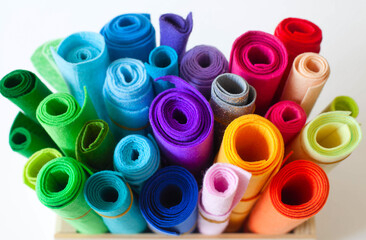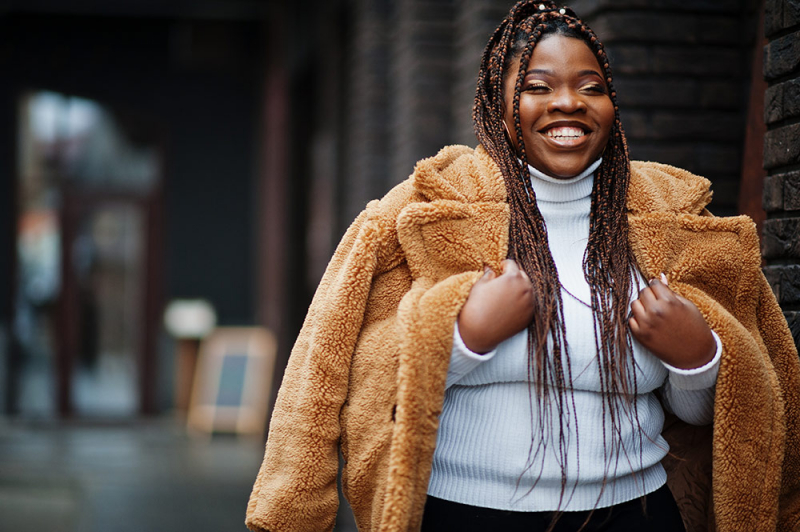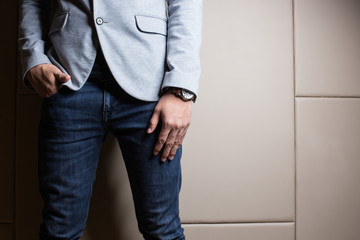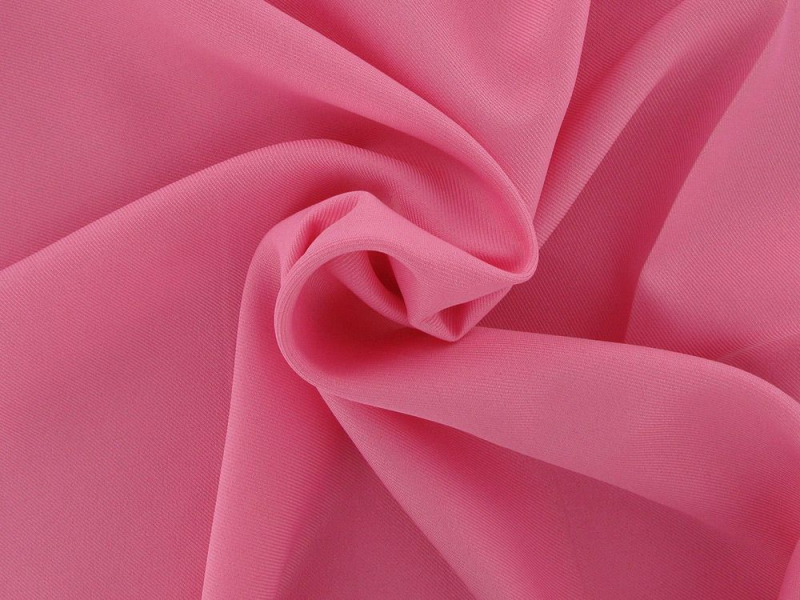- Home
- Dalston Mill Fabrics Blog
- Fabric Focus
- Different Types of Denim Explained - Dalston Mill Fabrics
Different Types of Denim Explained - Dalston Mill Fabrics
Denim is a versatile fabric and is used for numerous creative projects, including garment and interior creations. Traditionally, many people associate denim fabrics with blue jeans and jackets. But, there are many different types of denim fabric available. Understanding the different kinds of denim is essential for getting the best results.
Check out our short guide of the different denim fabrics, what kind of weights exists for denim materials, and denim colours you can choose from.
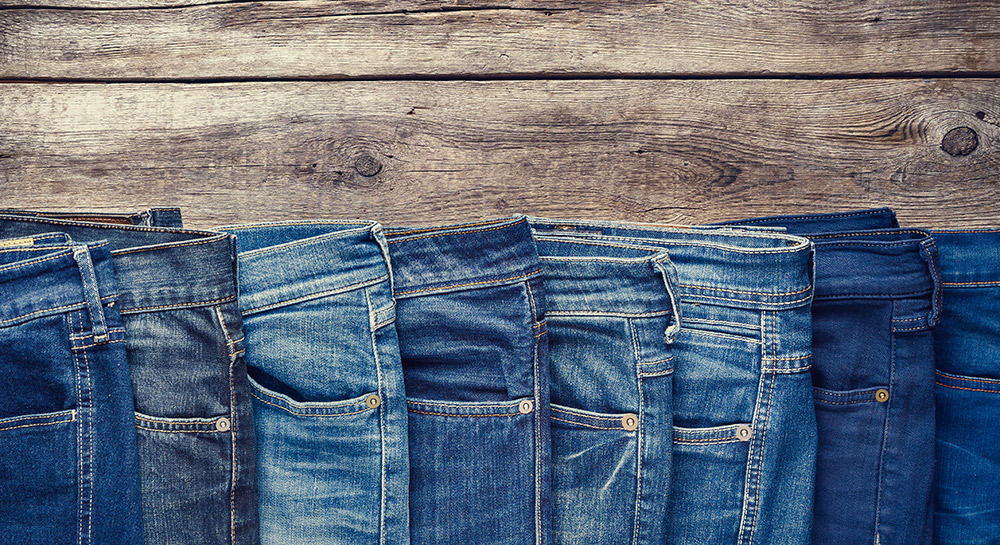
Types of denim
All denim is made from cotton fibres using a twill weave. This fabrication creates the diagonal ribbing that is iconic to denim material. While denim is ultimately the same in appearance, there are some types of denim that have slight variations.
Explore the types of denim fabric below:
100% cotton denim
Regular denim fabric is made from 100% cotton. This is the original denim material and is robust and versatile.
Raw denim
Raw or unwashed denim is a fabric that is not washed after the dying process. It is stiff to the touch.
Washed denim
In contrast to raw denim, washed denim is washed after the dying process to avoid shrinkage and colour bleed. Most denim fabrics are sold as washed.
Stretch denim
Stretch denim fabric is a material that has been blended with synthetic materials such as elastane and lycra to give a slight stretch but fitted shape.
Bull denim fabric
This denim fabric has a 3*a twill construction, making it strong and durable. Bull denim is often used for upholstery.
Coloured denim
Denim fabric is available in many colours. Blue denim is made using indigo dying, while other shades such as black, pink, grey and green are created using sulphur dying processes.
Acid wash denim fabric
Acid wash denim is created using bleaching techniques to fade the dye more aggressively.
Chambre fabrics
Technically, chambre fabrics are not the same as denim. However, they are similar in appearance and are often mistaken for lightweight denim. The difference between chambre and denim is the construction of the material. Chambre fabric is made with a plain weave, and denim is created using a twill weave, which has a rougher texture.
Understanding different denim weights
Exploring the different denim weights will help you pick the best fabric for your project. Typically, denim is available in three weights.
- Lightweight denim – up to 8ozs
- Midweight denim – between 8oz and 10oz
- Heavyweight denim – between 11oz and 20oz
Denim is measured in imperial units (ounces). The weight is determined by weighing a square yard of the material. Some fabric suppliers will also weigh denim fabrics in metric conversions – grams per square metre (gsm).
Lightweight denim is ideal for lighter garments and interior finishing’s. In contrast, heavyweight denim is thick and stiff and used for hardier applications.
100% denim stretches over time so if you are looking for fitted garments, opting for stretchy denim is the best fabric.
Denim Weight Conversion Tool
Steeped in its American roots, denim still wears it's identity on it's sleeve and is usually described by its imperical weight measured in oz. This can be confusing for some of us on this side of the Atlantic who are used to dealing with gsm. To help you get your head around the conversion, we've created this handy tool.
Denim colours
Denim fabrics are available in a wide range of colours. The colour is vital for gauging how much the fabric may fade over time.
Blue denim fabric
Blue was initially chosen as the colour of denim by US manufacturers due to the chemical properties of the dye. It’s naturally permeating, and the colour sticks well to the threads.
Denim is fabricated using an indigo dye and can be tailored to the desired shade during manufacturing. Blue denim comes in a variety of tones, including light blue wash, mid-blue wash and dark blue wash.
Other processes such as acid wash and stone washing can also be applied to blue denim to create unique effects.
Black denim fabric
Black denim is created in the same way as blue denim but is heavily dyed to make the black shade. The process entails using sulphur dyes to create the colour, and the dye penetrates the fabric deeply. Black denim is one of the hardest colours to keep fresh as it quickly fades to a grey colouration.
Different coloured denim fabrics
Denim is available in many different colours, including red, white, green and pink, among others. The process of dying the fabric is similar to black dye using sulphur dyes.
Denim fabric FAQs
What are the types of denim fabric?
The different types of denim fabric are:
- 100% cotton fabric
- Stretch denim
- Coloured denim
- Raw denim
- Washed and unwashed denim
- Acid wash denim
- Bull denim
- Stonewashed denim
Which denim fabric is best?
Denim can be used for a variety of projects, and the best option depends on your requirements. For example, stretch denim is ideal for fitted cuts, while 100% cotton denim is better for baggier styles.
What colours are most common for denim fabric?
Indigo or blue is the most popular denim fabric colour. There is also a wide range of other denim colours, including black, grey and white.
Are jeans for summer or winter?
Jeans are a versatile garment and can be worn in summer or winter. Opt for lightweight denim in warmer months and midweight denim in colder seasons.
Is denim good for summer?
Lightweight denim is suitable for the summer months. Denim is made from cotton, which absorbs moisture and is soft against the skin, making it a comfortable choice for clothing.
Is denim good for hot weather?
Denim is fine to wear in hot weather as long as you opt for lightweight fabric.
Does denim keep you cool?
Denim is made of cotton, one of the best fabrics to keep you cool in warm weather. However, opt for lightweight denim, as heavy fabrics will feel uncomfortable in hot temperatures.
Does denim keep you warm?
Denim is not the best fabric for keeping you warm in colder temperatures. It is not wind or moisture repellent.
Can you wear light denim in winter?
Yes. Light denim can be styled in winter. However, it may not keep you warm compared to other fabrics.
Can I wear jeans in the snow?
You should avoid wearing jeans in the snow as cotton denim can become very wet and uncomfortable.







































